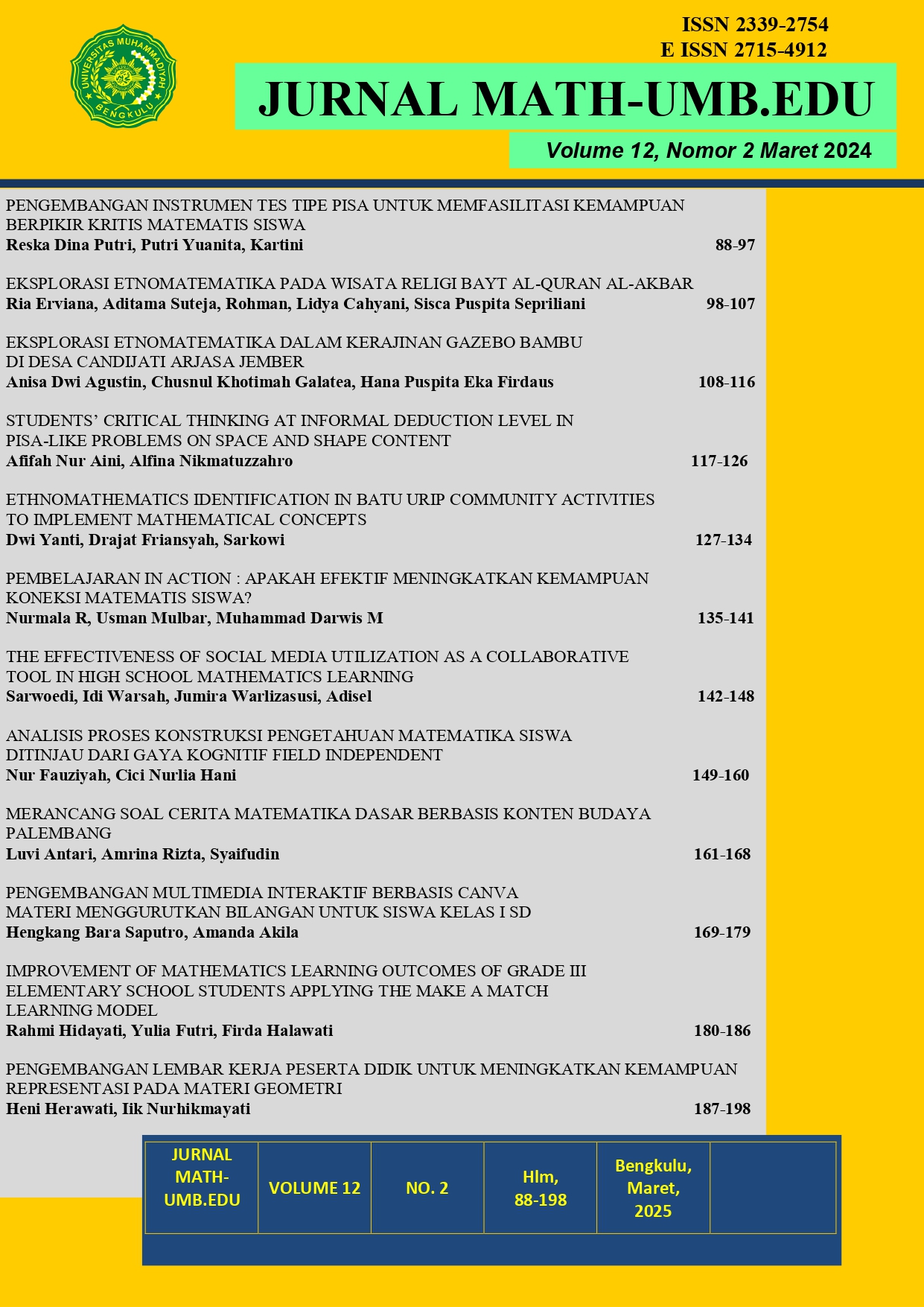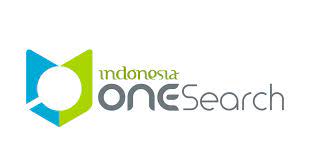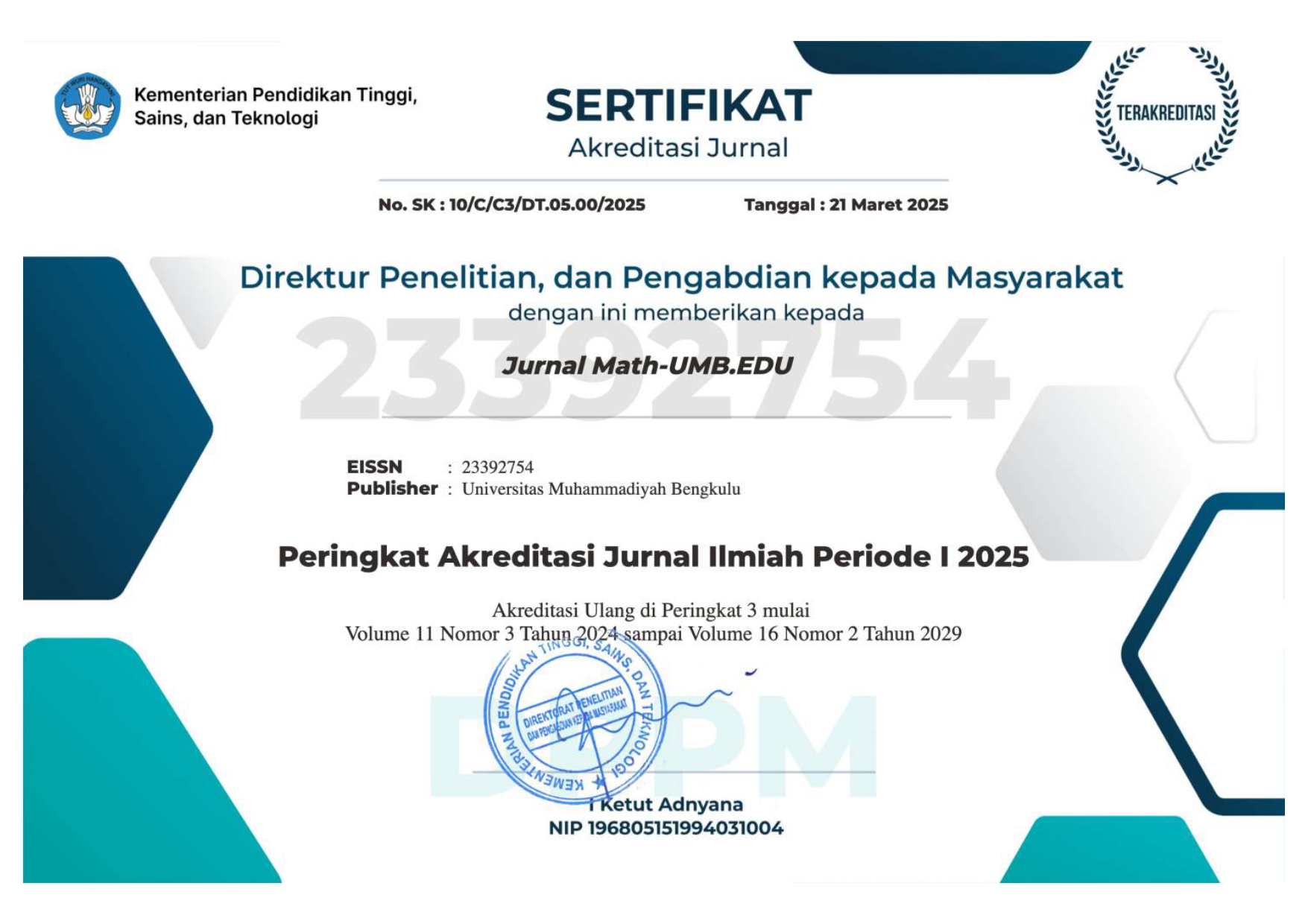THE EFFECTIVENESS OF SOCIAL MEDIA UTILIZATION AS A COLLABORATIVE TOOL IN HIGH SCHOOL MATHEMATICS LEARNING
DOI:
https://doi.org/10.36085/mathumbedu.v12i2.7462Abstrak
This study examines the effectiveness of social media as a collaborative tool in high school mathematics learning. Social media enables students to collaborate, share materials, and engage in discussions flexibly. Using a qualitative descriptive approach, this study analyzes fiveteen accredited national and international journal articles as its research subjects, this research analyzes various social media platforms, including WhatsApp, Telegram, and Instagram, and their impact on student motivation, participation, and learning outcomes. The results indicate that social media enhances student collaboration, motivation, and understanding of mathematical concepts. However, challenges such as distractions, platform misuse, and low digital literacy among students persist. To address these issues, the study suggests strategies such as focused learning groups and digital literacy training for students and teachers. With proper management, social media can effectively improve the quality of mathematics learning in high schools.
Keywords: Social media, collaboration, mathematics learning
Referensi
Abdillah, L. A. (2017). Exploring Students Blended Learning Through Social Media. ComTech (Computer, Mathematics and Engineering Applications), 7(4), 245-254. https://doi.org/10.21512/comtech.v7i4.2495
Abella-Garcia, V., Delgado-Benito, V., Ausin-Villaverde, V., & Alcala, D.H. (2019). To tweet or not to tweet: Student perceptions of the use of Twitter on an undergraduate degree course. Innovations in Education and Teaching International, 56(4), 402- 411. https://doi.org/10.1080/14703297.2018.1444503
Asmara, A,. & Jumri, R. (2024). Media Pembelajaran Matematika. PT. Mafy Media Literasi Indonesi. Sumatera Barat.
Boyd, D. M., & Ellison, N. B. (2007). Social network sites: Definition, history, and scholarship. Journal of Computer-Mediated Communication, 13(1), 210-230.
Cahyono, A. S. (2016). Pengaruh media sosial terhadap perubahan sosial masyarakat di Indonesia. Publiciana, 9(1), 140-157.
Chugh, R., & Ruhi, U. (2018). Social media in higher education: A literature review of Facebook. Education Information Technology, 23, 605–616. https://doi.org/10.1007/s10639-017-9621-2
Gikas, J., & Grant, M. M. (2013). Mobile computing devices in higher education: Student perspectives on learning with cellphones, smartphones & social media. The Internet and Higher Education, 19, 18-26.
Hatta, H. R., Hairah, U., Mardais, M., Diyana, W. N. R., Irvansyah, M., Sadanu, A. I., & Mujiono, M. N. A. (2022). Pelatihan penggunaan instagram sebagai media promosi bagi warga dusun rejosari kalimantan timur. J-MAS: Jurnal Pengabdian Masyarakat, 1(2), 213-216.
Jumri, R., Heswari, S., Hadi, K.A., Yuda. R.K., Meirani M., Kalsum, U. 2024. Metodologi Penelitian. PT. Penamuda Media. Yogyakarta.
Jumri, R., Risnanosanti., Ramadhani, W., Syofiana, M. 2023. Korelasi antara Realistic Mathematic Education dan Self Regulated Learning Siswa dalam Pembelajaran Matematika. https://scholar.google.co.id/citations?view_op=view_citation&hl=id&user=iGyPQTAAAAAJ&pagesize=80&citation_for_view=iGyPQTAAAAAJ:Se3iqnhoufwC . 21-28.
Heffner, T. (2016). The effects of social media use in undergraduate students [Masters Dissertations, Rowan University]. http://rdw.rowan.edu/etd/1440
Heick, T. (2015). 9 characteristics of 21st century learning. https://www.google.com/search?q=Heick%2C+T.+(2015).+9+characteristics+of+21st+century+learning.+Retrieved+Dec+15%2C+2019+from+https%3A%2F%2Fwww.teachthought.+com%2Flearning-models%2F9-characteristicsof-21st-century-learning%2F&sourceid=chrome&ie=UTF-8&safe=active&ssui=on
Kimmons, R., Veletsianos, G., & Woodward, S. (2017). Institutional Uses of Twitter in U.S. Higher Education. Innovative Higher Education, 42, 97–111. https://doi.org/10.1007/s10755-016-9375-6
Lim, M. S. C., Vella, A., Sacks-Davis, & Hellard M. E. (2014). Young people’s comfort receiving sexual health information via social media and other sources. International Journal of STD and AIDS, 25(14), 1003-1008. https://doi.org/10.1177/0956462414527264
Mahdi, M. A. (2019). Undergraduate Students’ Perceptions toward Social Media Usage and Academic Performance: A Study from Saudi Arabia. International Journal of Emerging Technologies in Learning, 14(3). https://doi.org/10.3991/ijet.v14i03.9340
Miss, E. H. N., Obiora, O. C., Odoh, & Miss, J. N. (2014). The Use of Social Networking Sites among the Undergraduate Students of University of Nigeria, Nsukka. Library Philosophy and Practice, 1195. http://digitalcommons.unl.edu/libphilprac/1195
Murdiana., Jumri, R., Bobby (2020). Pengembangan Kreativitas Guru dalam Pembelajaran Matematika. Jurnal Pendidikan Matematika Raflesia. https://ejournal.unib.ac.id/jpmr/article/download/11450/5755/27189
Mushtaq, A, J., & Benraghda, A. (2018). The Effects of Social Media on the Undergraduate Students’ Academic Performances. Library Philosophy and Practice, 1779. https://digitalcommons.unl.edu/libphilprac/1779
Nugraha, H., Kurniawansyah, K., & Ediansa, O. (2022). Pemahaman Mengenai Pentingnya Media Sosial Dalam Pelayanan Kesehatan Pada Klinik Basmallah Jambi. SINAR SANG SURYA: Jurnal Pusat Pengabdian Kepada Masyarakat, 6(1), 190-198.
Parusheva, S., Aleksandrova, Y., & Hadzhikolev, A. (2018). Use of Social Media in Higher Education Institutions – an Empirical Study Based on Bulgarian Learning Experience. TEM Journal, 7(1), 171-181. https://doi.org/10.18421/TEM71-21
Powell, D. A., Jacob, C. J., & Chapman, B. J. (2012). Using Blogs and New Media in Academic Practice: Potential Roles in Research, Teaching, Learning, and Extension. Innovative Higher Education, 37, 271–282. https://doi.org/10.1007/s10755-011-9207-7
Pratiwi, N. I. (2017). Penggunaan Media Video Call dalam Teknologi Komunikasi. Jurnal Ilmiah Dinamika Sosial, 1(2), 20-224. https://journal.undiknas.ac.id/index.php/fisip/article/view/219
Putri, W. S. R., Nurwati, N., & Budiarti, M. (2016). Pengaruh media sosial terhadap perilaku remaja. Prosiding Penelitian dan Pengabdian kepada Masyarakat, 3(1).47-51. http://dx.doi.org/10.24198/jppm.v3i1.13625
Rahmawati, W. H., & Naryoso, A. (2019). Imbas Intensitas Penggunaan internet dan Intensitas Komunikasi Orang Tua Anak Terkait Aktivitas Sekolah Terhadap Prestasi Belajar Peserta Didik Pedesaan. Hubungan Online, 7(4), 1–11. https://ejournal3.undip.ac.id/index.php/hubungan-online/article/view/24194
Rafiq, A. (2020). Dampak Media Sosial Terhadap Perubahan Sosial Suatu Masyarakat. Global Komunika, 1(1), 18-29.
Sandanayake, T.C. (2021). Enhancing Students’ Performances by Integrating Social Media in Undergraduate Learning. International Journal of Learning, Teaching and Educational Research Vol. 20, No. 4, pp. 43-60, April 2021 https://doi.org/10.26803/ijlter.20.4.3
Sari, N. P., & Hidayat, W. (2022). Pemanfaatan media sosial sebagai media pembelajaran matematika di masa pandemi. Jurnal Pendidikan Matematika, 6(2), 123-135.
Sarmi Rafi. (2012). Media sosial. Http://Www.Unpas.Ac.Id/Apa-Itu-Media-Sosial.
Sosiawan, E. A. (2020). Penggunaan situs jejaring sosial sebagai media interaksi dan komunikasi di kalangan mahasiswa. Jurnal Ilmu Komunikasi, 9(1), 60-75.
Statista Research Department. (2023). Social media usage in education: Current trends and statistics. Statista. https://www.statista.com/topics/11170/online-education-in-indonesia/#topicOverview
Sulistyaningsih, M., Mangelep, N. O., & Kaunang, D. F. (2022). Efektivitas Penggunaan E-Learning Pada Pembelajaran Matematika Dengan Pendekatan Problem Posing. Gammath: Jurnal Ilmiah Program Studi Pendidikan Matematika, 7(2), 105-114.
Taaraungan, F. (2022). Pengaruh Penggunaan Media Sosial Pada Kehidupan Sehari-hari Terhadap Prestasi Belajar Matematika Peserta Didik. Jurnal Pendidikan Sosial dan Humaniora.https://publisherqu.com/index.php/pediaqu/article/view/32/15
Wahyudi, S., & Fajar, T. (2021). Media sosial dan efektivitas pembelajaran daring: Sebuah tinjauan. Jurnal Teknologi Pendidikan Indonesia, 12(3), 78-89.



















